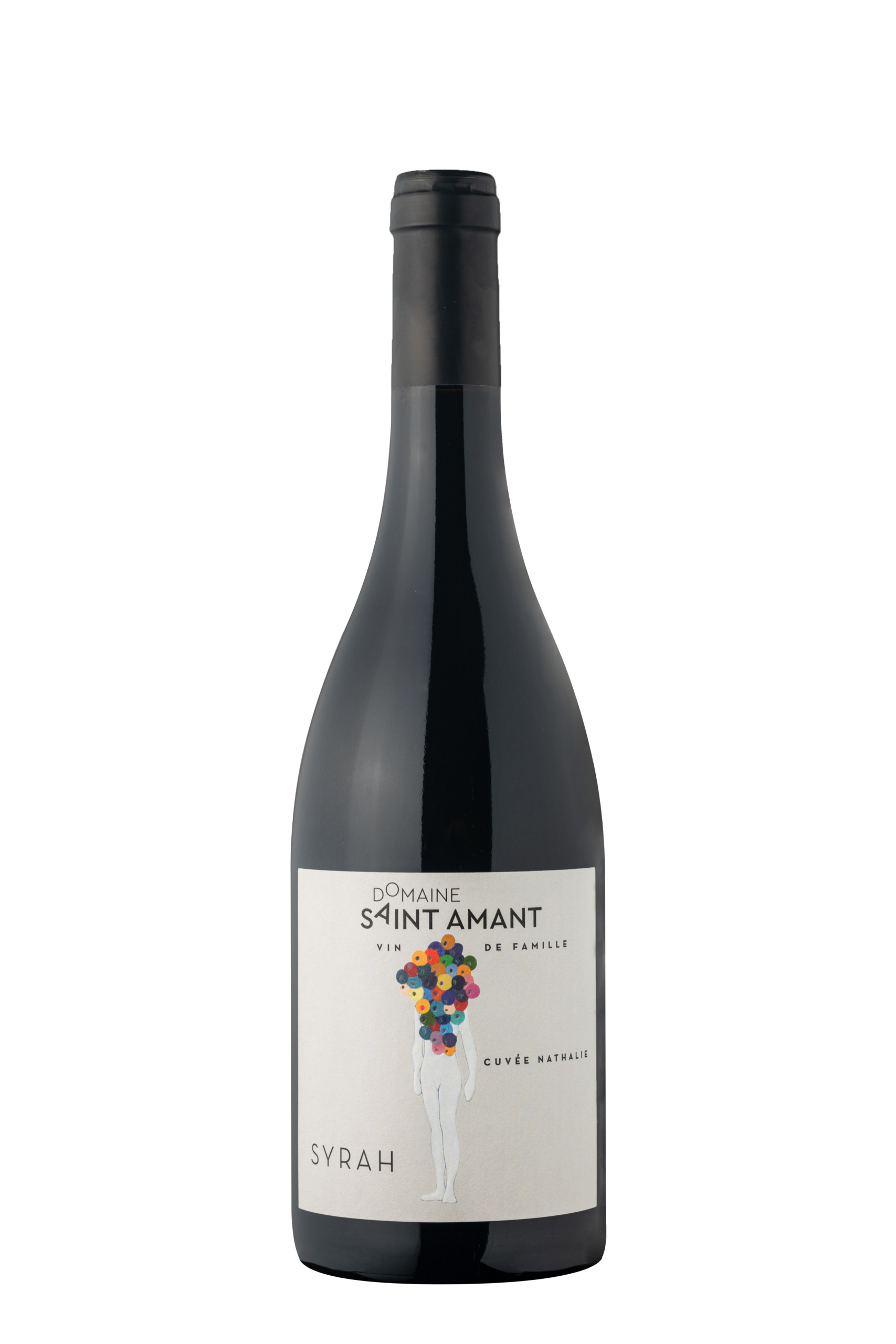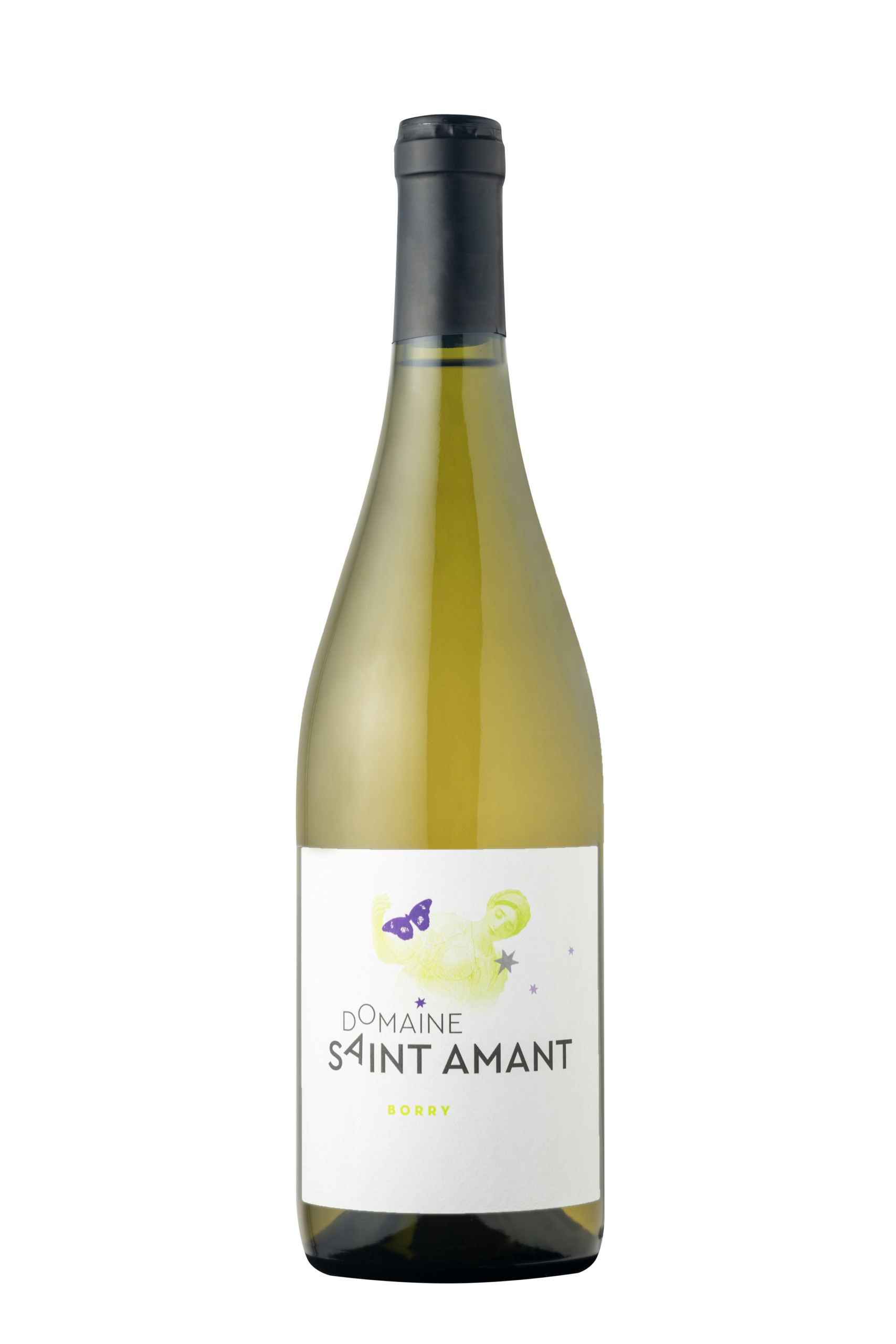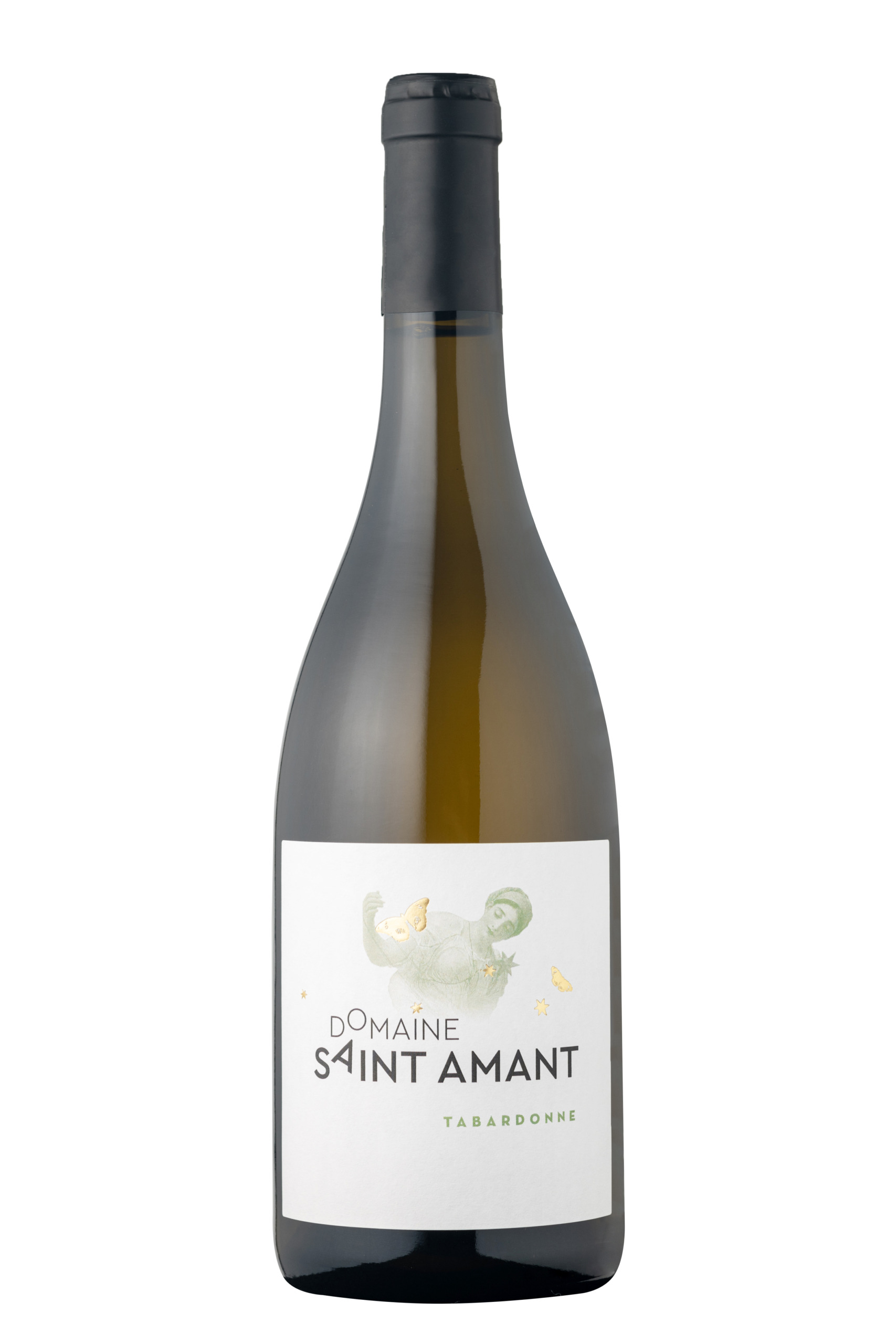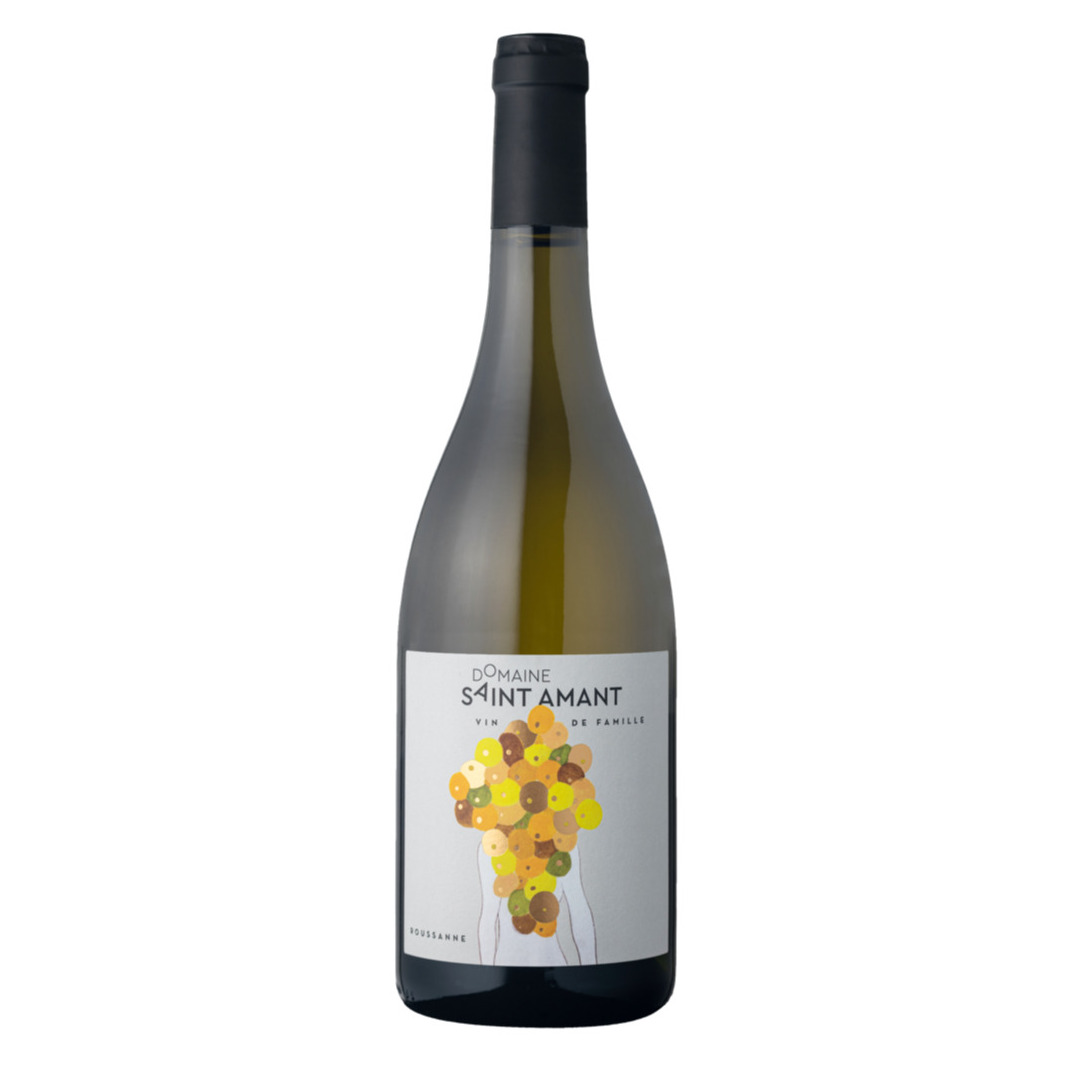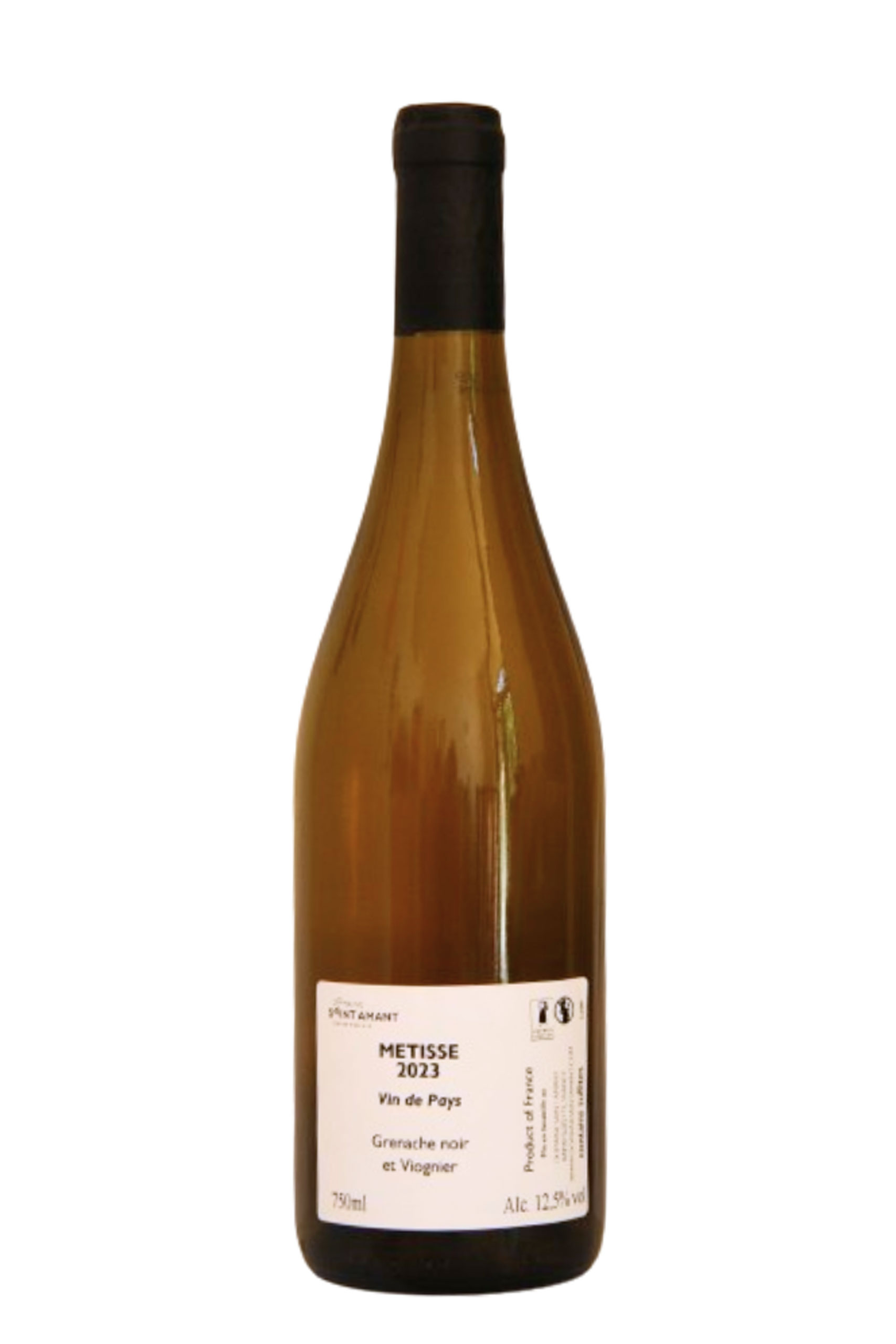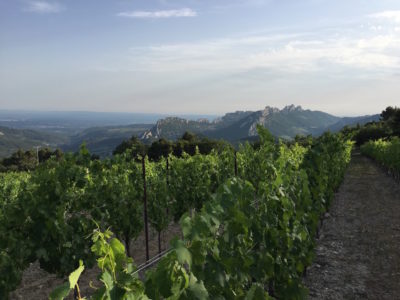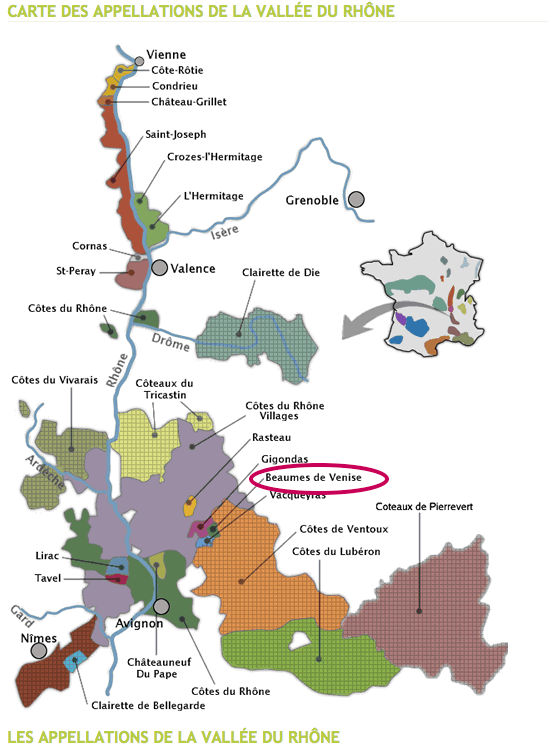Red wines
Grangeneuve
Grangeneuve’s grapes are harvested at the top of the red AOC Beaumes de Venise, above the village of Suzette, high up at 1500′ on 10 acres of small, windy terraces. The soil is a mix of marl and limestone from the Trias era. The 90yearsold grenache, 50yearsold carignan and syrah are blend together with white viognier right from the beginning of the fermentation, after destemming and crushing. Wild yeasts will start the fermentation after a short maceration. Once racked and pressed off the grape skins the wine ages for 12 months in 20 years-old french wooden tanks, undergoing spontaneous MLF during this time. The wines are elegant and truly expressive of the domaine’s outstanding altitude terroir. Fresh and inviting in their youth, their underlying structure will also reward cellaring.
Cuvée Nathalie – Syrah
This cuvée is made with our best Syrah grapes, only when nature let them ripen and give their full potential. They are located in two differents areas : the free draining east facing slopes of limestone terraces will give roundness and structure, the fresh and deep marn soils will bring forward the subtle aromas of the syrah : spice, licorice and violet. Low yields, a meticulous attention to the growing vines and a long ageing in 50% new french light grain wooden barrels create density, great complexity, powerful flavours for this long lasting wine.
Cuvée Nathalie – Syrah
This cuvée is made with our best Syrah grapes, only when nature let them ripen and give their full potential. They are located in two differents areas : the free draining east facing slopes of limestone terraces will give roundness and structure, the fresh and deep marn soils will bring forward the subtle aromas of the syrah : spice, licorice and violet. Low yields, a meticulous attention to the growing vines and a long ageing in 50% new french light grain wooden barrels create density, great complexity, powerful flavours for this long lasting wine.
Les Clapas
Altitude Côtes du Rhône ! In this wine the grapes come from our highest grenache and syrah vines. The soils are a mix of clay and stony gravels. Here again, the wine reflects the freshness brought by cold nights above 1500’. The harvest takes place 3 weeks later than in the plain. A gentle extraction during the fermentation makes this wine very drinkable : it is a seductive combination of berries and spicy aromas on the nose, with a soft and supple palate. Once tasted, forever adopted!
White wines
Borry
In the heart of the Dentelles de Montmirail, between 1200 and 2000′, the viognier grape blossoms : the altitude injects a stimulating freshness to the grapes. The soil has a marl base mixed with lime rocks. Blend with 5% roussanne, La Borry has white flowers aromas – almond, honeysuckle – and white fruits flavours – apricot, peach – which are typical of the village of Suzette’s terroir. AOC Côtes du Rhône.
Tabardonne
La Tabardonne is a blend of Viognier and Roussanne, 100% barrel fermented and aged on lees in french oak, with 25% being new. The result is a nice, round, mouthful and elegant gastronomy wine, which can go with a whole meal. Pairs very well also with lightly spicy dishes. AOC Côtes du Rhône Villages.
Tabardonne
La Tabardonne is a blend of Viognier and Roussanne, 100% barrel fermented and aged on lees in french oak, with 25% being new. The result is a nice, round, mouthful and elegant gastronomy wine, which can go with a whole meal. Pairs very well also with lightly spicy dishes. AOC Côtes du Rhône Villages.
Special cuvées
Roussanne
Dry white wine. AOC Côtes du Rhône Villages. The Roussanne grapes are scattered between 1200′ and 1800′ all over the vineyard, hence a very mixed soil. Most of the time they are harvested together with the Viognier grapes. Some years however we can collect and ferment part of them separately in order to elaborate this small “garage” cuvée. Barrel fermented and aged for 12 months, the wine has concentrated fruit flavours, a rich texture and great complexity. It is delicious with a few years of bottle age.
Les Trois Roses
Our rosé is always a blend of three grapes, including 20% Viognier. All three grapes are blend as soon as in the press. Nature does’nt always provide us with the chance of doing it every year. So make the most of it when you can grab it!
Les Trois Roses
Our rosé is always a blend of three grapes, including 20% Viognier. All three grapes are blend as soon as in the press. Nature does’nt always provide us with the chance of doing it every year. So make the most of it when you can grab it!
Métisse
A “Blanc de Noir”, made from red Grenache and Viognier grapes (25%) which are pressed before fermentation, as for a white wine. The juice is then fermented in barrels that have been used for several wines, and stored throughout the winter in these same barrels before being bottled.
Saint Jaume
A 100% Grenache wine, vinified in whole bunches, then pressed before the end of fermentation. An easy-drinking wine with subtle extraction and fresh fruit aromas. With this wine, the winemaker also flirts with low doses of SO2, but without being dogmatic…
Saint Jaume
A 100% Grenache wine, vinified in whole bunches, then pressed before the end of fermentation. An easy-drinking wine with subtle extraction and fresh fruit aromas. With this wine, the winemaker also flirts with low doses of SO2, but without being dogmatic…
Bonelli
Pour ce vin, nous nous inspirons de nos voisins italiens et de leur technique du « Ripasso » pour assembler grenache et syrah : un vin de grenache repassé sur un marc de syrah fermenté séparément, pour une petite macération de plusieurs jours.
C’est un Beaumes de Venise au style plutôt moderne, fruité, frais, aux tanins souples.
Viognier
Viognier is a white wine grape variety. The origin of the Viognier grape is unknown but very old : it is presumed to be an ancient grape, possibly originating in Dalmatia (present day Croatia) and then brought to the Rhône by the Romans. It is the only permitted grape for the French wine Condrieu in the Northern Rhône Valley.
Since the late 80es, it can also be found in the Ardèche region, the Languedoc, the Southern Rhône Valley.
The potential quality of Viognier is highly dependent on viticultural practices and climate, with the grape requiring a long, warm growing season in order to fully ripen but not a climate that is so hot that the grape develops high levels of sugars and potential alcohol before its aromatic notes can develop.
In Suzette, the Mistral and the altitude have a distinct effect on the Viognier vineyards. The wind tempers the Mediterranean climate of the region, and cools the vines down after the severe heat of summer.
Capricious and difficult, the viognier is generally trellised, because given the great length of its branches, it is relatively sensitive to the wind. It should be carried in moderately long size, with a density of plantation high enough to obtain good results.
Capricious and difficult, the viognier is generally trellised, because given the great length of its branches, it is relatively sensitive to the wind. It should be carried in moderately long size, with a density of plantation high enough to obtain good results.
The Viognier varietal has more natural aromatics that include notes of peach, pears, violets and minerality.
The grape is naturally a low yielding variety.
The highly aromatic and fruit forward nature of the grape allows Viognier to pair well with spicy foods, lobster, sea food.
Beaumes de Venise
A little information about this beautiful appellation!
In the Southern Rhône Valley, between Gigondas and Vacqueyras, in the heart of the stunning Dentelles de Montmirail, the vines that produce red Beaumes de Venise lie on 2500 acres of hills going up to 500m (1500′), covering 4 villages : Suzette (the highest at the foot on mount Saint Amant), Lafare, La Roque Alric and Beaumes de Venise.
About 30 independant wine makers produce quality wines within the respect of their beautiful environment.
The red Beaumes de Venise wine became a “Cru des Côtes du Rhône” in 2005.
Le Viognier
Le viognier est une variété de raisin blanc. Les légendes qui entourent les cépages évoquent la Dalmatie comme patrie du Viognier, mais ce qui est sûr, c’est que ce cépage est cultivé depuis plus de 2000 ans dans les environs de Vienne, au Sud de Lyon.
Plus récemment, il s’est implanté dans le Massif Central, le Languedoc, le sud de la Vallée du Rhône.
Ce cépage nécessite de la chaleur pour bien mûrir, et on considère qu’il donne ses meilleurs résultats aromatiques autour de 13% d’alcool. Mais il faut faire attention aux excès de chaleur, qui accélèrent trop la maturation et lui ôtent de la fraîcheur.
A Suzette, l’altitude et les nuits fraîches ainsi que le mistral, ont des effets très bénéfiques sur les vignes de viognier : le vent tempère le climat Méditerranéen de la région, et revigore les vignes après les chaleurs de l’été.
Capricieux et difficile, le viognier est généralement palissé, car étant donné la grande longueur de ses sarments, il est relativement sensible au vent. Il faut le conduire en taille modérément longue, avec une densité de plantation assez élevée pour obtenir de bons résultats.
Capricieux et difficile, le viognier est généralement palissé, car étant donné la grande longueur de ses sarments, il est relativement sensible au vent. Il faut le conduire en taille modérément longue, avec une densité de plantation assez élevée pour obtenir de bons résultats.
Le viognier séduit par la richesse de ses arômes. Les notes les plus emblématiques sont la pêche blanche et la violette. Mais de nombreux arômes se déploient en bouche à la dégustation, parmi lesquels on trouve le zeste de citron, l’abricot, les fleurs blanches – jasmin et chèvrefeuille en tête.
Le viognier, par ses caractéristiques variétales permet, dans des conditions favorables, d’élaborer des vins très aromatiques, complexes, puissants et de grande qualité.
À servir avec du homard, des plats épicés, des artichauts ou encore des asperges.
Beaumes de Venise rouge : Cru Classé de la Vallée du Rhône
Un peu d’information sur cette belle AOC Beaumes de Venise rouge :
Elle se trouve dans la partie méridionale des AOC de la vallée du Rhône, à côté de Gigondas et Vacqueyras, au coeur des magnifiques Dentelles de Montmirail. Le vignoble occupe 600 ha de coteaux qui culminent à plus de 500m et couvrent 4 communes : Suzette (la commune la plus en altitude), Lafare, La Roque Alric et Beaumes de Venise. Une trentaine de vignerons indépendants anime l’appellation. C’est en 2005 que les vins rouges de Beaumes-de-Venise accèdent au rang de Cru des Côtes du Rhône.
LE DÉCRET DE L’APPELLATION D’ORIGINE CONTRÔLÉE REPOSE SUR DES CRITÈRES PRÉCIS
– Les zones boisées ne figurent pas dans la délimitation afin de préserver le paysage et l’environnement, et de favoriser les équilibres naturels et la biodiversité.
– La vendange est exclusivement manuelle, pour récolter les raisins à bonne maturité et en parfait état de santé. Le désherbage chimique entre le rang est interdit ainsi que les traitements spécifiques anti-botrytis.
– Les rendements sont modérés et contrôlés (38 hl/Ha)
– Les vignerons ne recourent pas à l’enrichissement, ni aux méthodes de vinification par thermo flash détente.
– Le cépage principal est le grenache noir pour au moins 50% et le cépage complémentaire est la syrah pour un minimum de 25%. A cela peuvent s’ajouter des cépages accessoires comme le mourvèdre, le cinsault, le carignan et d’autres cépages autorisés dans la Vallée du Rhône avec possibilité de 10 % de cépage blanc.
QUELQUES ARTICLES SUR L’APPELLATION :
Beaumes de Venise à l’abri des Dentelles – Juillet 2016 par Sophie de Salettes
Vin et Vignoble – Février 2016 par Sébastien Durand-Viel
La tentation de Beaumes – Mars 2017 par Robert Pitte



















